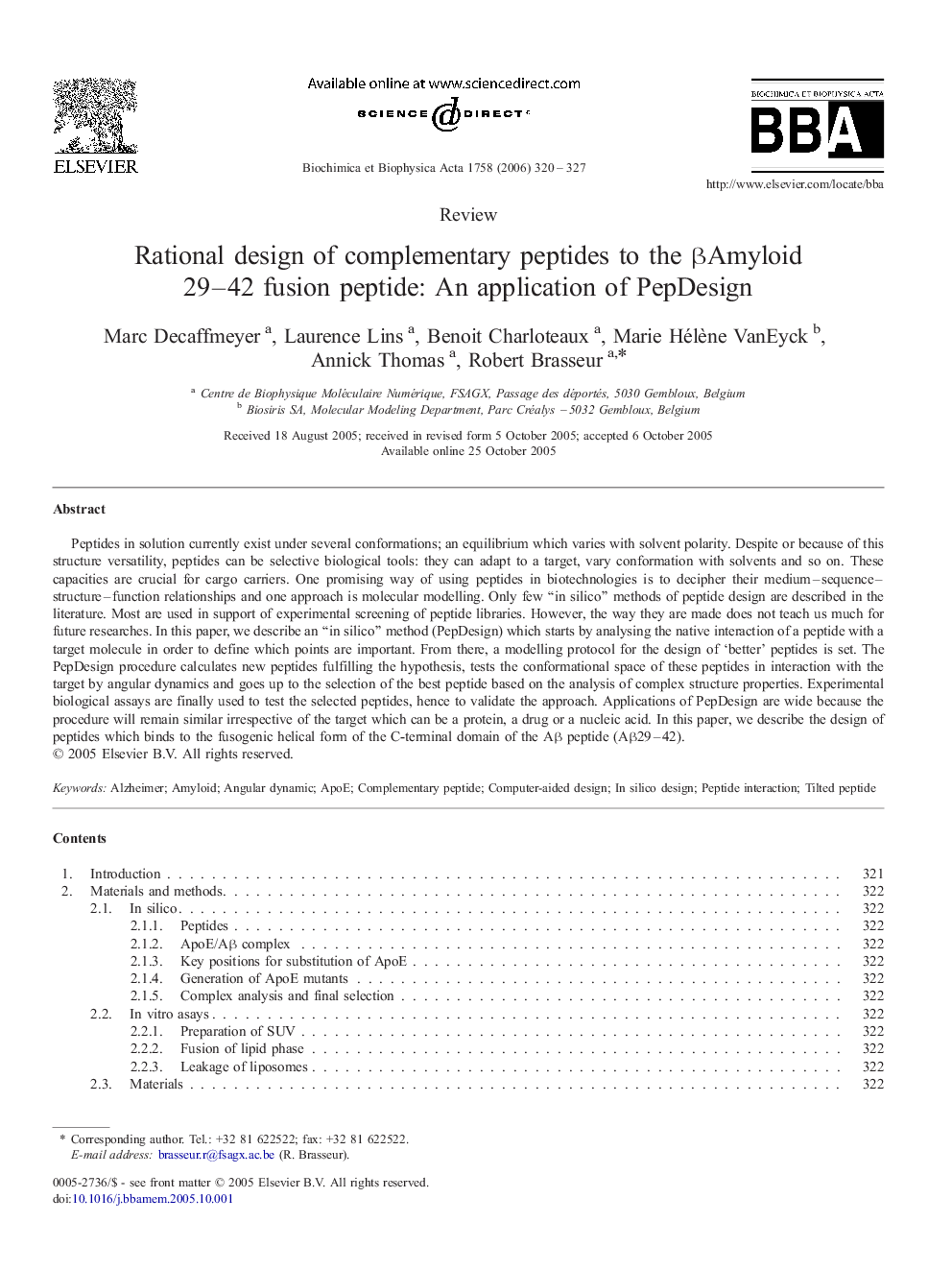| Article ID | Journal | Published Year | Pages | File Type |
|---|---|---|---|---|
| 1946141 | Biochimica et Biophysica Acta (BBA) - Biomembranes | 2006 | 8 Pages |
Peptides in solution currently exist under several conformations; an equilibrium which varies with solvent polarity. Despite or because of this structure versatility, peptides can be selective biological tools: they can adapt to a target, vary conformation with solvents and so on. These capacities are crucial for cargo carriers. One promising way of using peptides in biotechnologies is to decipher their medium–sequence–structure–function relationships and one approach is molecular modelling. Only few “in silico” methods of peptide design are described in the literature. Most are used in support of experimental screening of peptide libraries. However, the way they are made does not teach us much for future researches. In this paper, we describe an “in silico” method (PepDesign) which starts by analysing the native interaction of a peptide with a target molecule in order to define which points are important. From there, a modelling protocol for the design of ‘better’ peptides is set. The PepDesign procedure calculates new peptides fulfilling the hypothesis, tests the conformational space of these peptides in interaction with the target by angular dynamics and goes up to the selection of the best peptide based on the analysis of complex structure properties. Experimental biological assays are finally used to test the selected peptides, hence to validate the approach. Applications of PepDesign are wide because the procedure will remain similar irrespective of the target which can be a protein, a drug or a nucleic acid. In this paper, we describe the design of peptides which binds to the fusogenic helical form of the C-terminal domain of the Aβ peptide (Aβ29–42).
